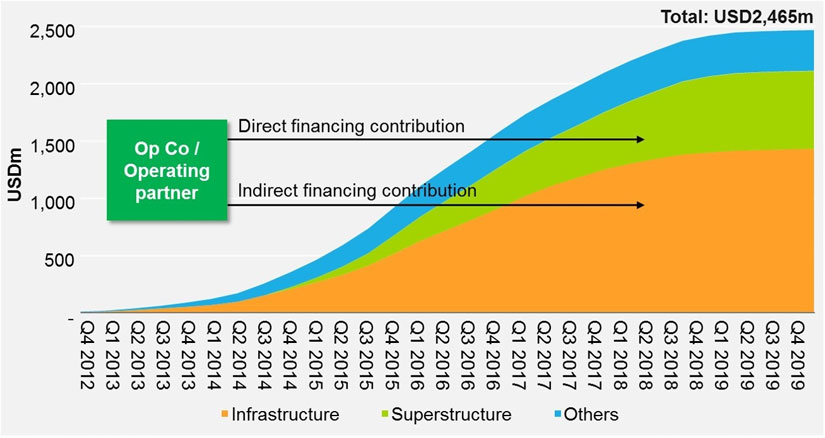Introduction
The Seaport Group has developed several financial models that are specific to container terminals. The modelling approach evolved over 15 years from various projects and incorporation of standard industry practices. In most cases, the models were two-party project finance models that estimated the financial performances of a container terminal operator under a concession to a port authority and of the port authority. The financial model utilizes parametric inputs such as revenue per container and tax rates and macros or Visual Basic coding to solve for results and perform sensitivity analyses.
The financial model develops both nominal and real estimates of revenues and costs. The nominal estimates provide inputs for proforma financial statements and generate free cash flow estimates for financial performance in nominal terms. The model also adjusts the model results to real terms for evaluations that require them.
The most common estimates are the real and nominal rates of internal (IRR) of the project if the goal is financial performance.
Another useful metric if one is comparing alternative technical approaches is levelized cost. Levelized cost is calculated as the present value of costs divided by the present value of volume (such as TEU in the case of container terminals) at the same discount rate.
The levelized cost technique is used extensively in the electricity generation industry to estimate the long-term costs of electricity from different generation technologies. Its value is that it generates one comparative number, a cost per unit of output, for technologies with widely-varying inputs and costs over time. It distils complex cash flows over time into one unit value per case.
In electricity generation, an example is coal-fired thermal generation versus solar power. In container terminals, the levelized cost technique is applicable to evaluation of alternative container terminal locations, configurations and technologies.
Examples of Model Applications
Examples of the application of such models include:
- Financial evaluations of essentially all container terminals in the Port of Vancouver, existing and planned, for a mix of private and port authority clients.
- As part of Vancouver Fraser Port Authority’s (VFPA) Container Capacity Improvement Program (CCIP), Seaport developed a more complex two-party project finance model to develop preliminary estimates of the financial returns of the project to a container terminal operator as concessionaire and VFPA as owner. The main project metric was the real IRR of each party. The model evaluated a number of technology options and utilized a series of container traffic forecasts. It incorporated macro-driven evaluations of alternative cases.
- Assistance to the prime transaction consultant in developing its financial model of the port component of the Punta Colonet port, terminal and railroad project in Mexico.
- An evaluation of the levelized cost per container for a West Coast U.S. container terminal for several configurations of technology (see graphic with typical comparative results).





